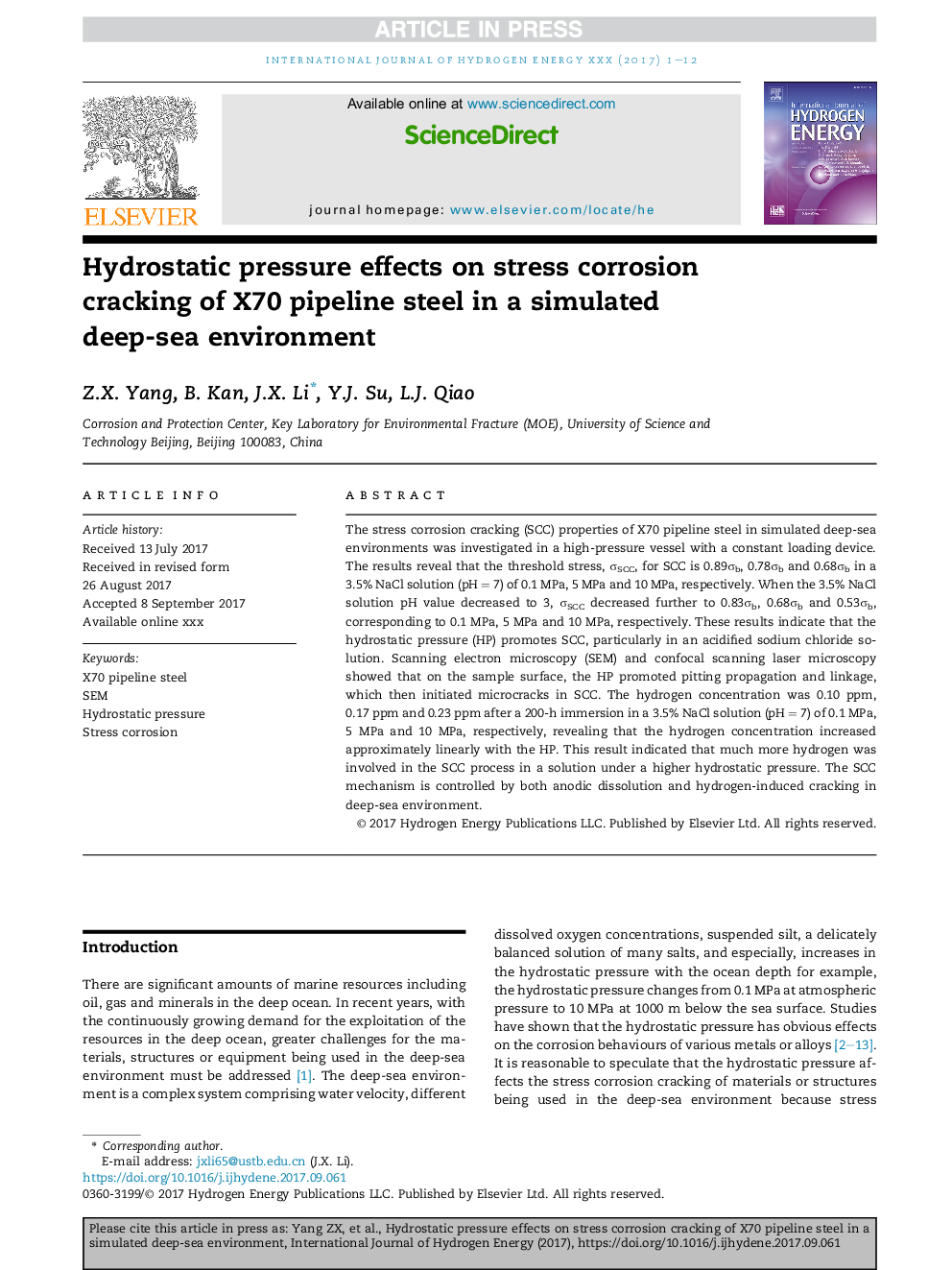| Article ID | Journal | Published Year | Pages | File Type |
|---|---|---|---|---|
| 7709775 | International Journal of Hydrogen Energy | 2017 | 12 Pages |
Abstract
The stress corrosion cracking (SCC) properties of X70 pipeline steel in simulated deep-sea environments was investigated in a high-pressure vessel with a constant loading device. The results reveal that the threshold stress, ÏSCC, for SCC is 0.89Ïb, 0.78Ïb and 0.68Ïb in a 3.5% NaCl solution (pHÂ =Â 7) of 0.1Â MPa, 5Â MPa and 10Â MPa, respectively. When the 3.5% NaCl solution pH value decreased to 3, ÏSCC decreased further to 0.83Ïb, 0.68Ïb and 0.53Ïb, corresponding to 0.1Â MPa, 5Â MPa and 10Â MPa, respectively. These results indicate that the hydrostatic pressure (HP) promotes SCC, particularly in an acidified sodium chloride solution. Scanning electron microscopy (SEM) and confocal scanning laser microscopy showed that on the sample surface, the HP promoted pitting propagation and linkage, which then initiated microcracks in SCC. The hydrogen concentration was 0.10Â ppm, 0.17Â ppm and 0.23Â ppm after a 200-h immersion in a 3.5% NaCl solution (pHÂ =Â 7) of 0.1Â MPa, 5Â MPa and 10Â MPa, respectively, revealing that the hydrogen concentration increased approximately linearly with the HP. This result indicated that much more hydrogen was involved in the SCC process in a solution under a higher hydrostatic pressure. The SCC mechanism is controlled by both anodic dissolution and hydrogen-induced cracking in deep-sea environment.
Related Topics
Physical Sciences and Engineering
Chemistry
Electrochemistry
Authors
Z.X. Yang, B. Kan, J.X. Li, Y.J. Su, L.J. Qiao,
